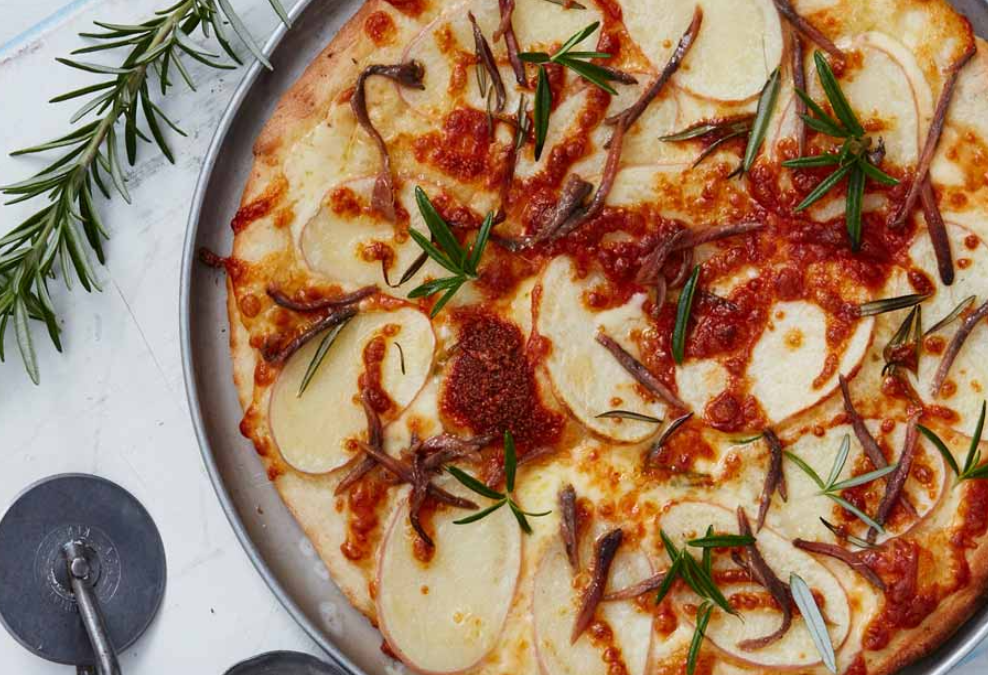Imagine biting into a perfectly made pizza. The crust is just the right amount of crispy and chewy, and the toppings are all delicious.
If you want to make great pizza at home or your favorite pizzeria, you need to know how to choose the right base. In this article, you will explore everything you need to know about pizza bases.

Types of Pizza Bases
Traditional Pizza Dough
Traditional pizza dough is made with basic ingredients like flour, water, yeast, and salt. This dough is usually hand-tossed to create a medium-thick base that is soft on the inside and slightly crispy on the outside. It’s versatile and works well with a variety of toppings.
Thin Crust
This type of crust allows the toppings to stand out more since the base doesn’t dominate the taste. Thin-crust pizzas cook quickly and are often associated with styles like New York or Neapolitan pizza. They are ideal for people who prefer a crunchy texture and less dough in each bite.
Thick Crust
Thick-crust pizza, also known as deep-dish or pan pizza, has a thick and fluffy base. The dough is allowed to rise more, creating a substantial, bread-like texture.
This type of crust can hold a lot of toppings and sauce without becoming soggy. It’s hearty and filling, making it a favorite for those who love a chewy and substantial bite. Chicago-style pizza is a famous example of thick-crust pizza.
Stuffed Crust
Stuffed crust pizza has extra ingredients, usually cheese, inside the outer edge of the dough. This creates a cheesy surprise in every bite of the crust. Some variations might include other fillings like pepperoni or vegetables. Stuffed crust pizza is great for cheese lovers and those who enjoy a fun twist on the traditional pizza experience. If you’re passionate about pizza but don’t have the time, check out Prepa Pizza for the best pizza dough mix to help you get started.
Gluten-Free Bases
Gluten-free pizza bases are made without wheat flour, using alternatives like rice flour, almond flour, or chickpea flour. These bases cater to people with gluten intolerance or celiac disease. Gluten-free dough can be either thin or thick, depending on the recipe, and offers a different texture and flavor.
Techniques for Making Pizza Dough
Mixing and Kneading
To make pizza dough, start by mixing the ingredients: flour, water, yeast, and salt. Combine them in a bowl until a sticky dough forms. Kneading is the next step. This means pressing and folding the dough repeatedly for about 10 minutes.
Kneading develops the gluten, which makes the dough elastic and smooth. You can knead by hand or use a mixer with a dough hook. The dough should become less sticky and more stretchy as you knead.
Rising and Fermentation
After kneading, let the dough rise. Place it in a bowl, cover it with a cloth or plastic wrap, and leave it in a warm place. This process, called fermentation, allows the yeast to make the dough rise and develop flavor.
The dough should double in size, which usually takes 1-2 hours. For even better flavor, you can let the dough rise slowly in the refrigerator for 24 hours or more. This slow rise enhances the taste and texture.
Shaping and Stretching
Once the dough has risen, it’s time to shape and stretch it into a pizza base. First, punch down the dough to remove excess air. Divide it into smaller balls if making more than one pizza. Flatten each ball into a disk, then gently stretch it out with your hands or a rolling pin.
Start from the center and work outward to get an even thickness. Be careful not to tear the dough. If it springs back, let it rest for a few minutes before continuing. The dough is now ready for toppings and baking.
Learn More About Pizza Bases
Whether you prefer a thin, crispy crust or a thick, chewy base, mastering the art of pizza dough will elevate your homemade pizzas to a new level. So, dive into the world of pizza bases, try out different recipes, and discover what works best for you.



